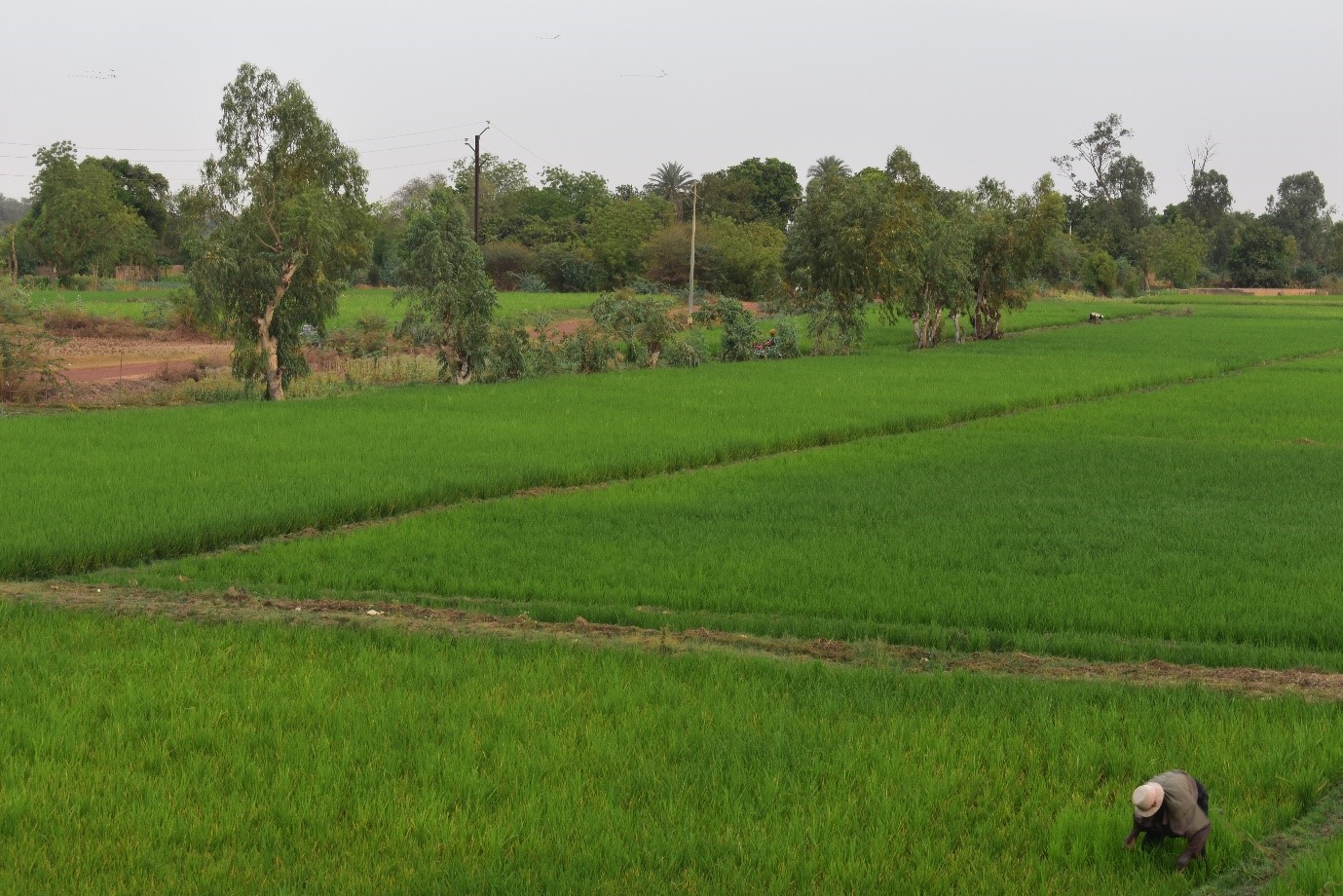Bernhard Tischbein, John Lamers, Navneet Kumar and Sarah Verleysdonk (all members of ZEF) travelled to Niamey/Niger at the end of March within the frame of the RARSUS project.
During our stay, we visited study sites in and around Niamey, collected primary and secondary data and took part in meetings with locally based organizations regarding data acquisition and future cooperation within the RARSUS project frame.
After travelling and a first night in Niamey, the colleagues from the WASCAL GRP Climate and Energy Université Abdou Moumouni headed by its director, Prof. Adamou Rabani, had organized a kick-off meeting the following morning.
This meeting was a great possibility to meet with all local partners, many of whom we met again later during our stay for in depth talks on the project and discussions on future interactions. A number of possible study sites were evaluated within the group.
In addition to the WASCAL MRP-CCE and RARSUS members of staff (Prof. Rabani, Prof. Boubacar Ibrahim, Dr. Ali Nouhous, Dr. Moussa Moukaila, MSc student Hassane Adamou and PhD student Abdou Boko) present were:
Prof. Moussa Konate (Department of Geology), Dr. Hamadou Zissaka (Department of Geography), Dr. Mohamed Housseini Ibrahim (Director of Hydrology, Ministry of Water and Sanitation), Dr. Ibrahim Abdou (ONAHA), Prof. Abdou Bontianti (Department of Geography, IRSH) and Prof. Barrim Alhou (Hydrogeology).
Additional meetings throughout our stay were being held with:
Dr. Nouhou Koutcha Mariama (AGHRYMET), Dr. Abdou Ali (Chief of the Information and Research Department, AGHRYMET) and Dr. Dougbedji Fatondji (ICRISAT).
Several probable study sites for the RARSUS project in and around Niamey were visited with the help of our local colleagues and partners. The first one was the SAGA pumping station in the south-southeast of Niamey, which provides water supply to the irrigation scheme of the farmers at the SAGA cooperative. It is located on the left bank of the Niger River and is mainly being used for rice production and additional horticulture cultivation.

A pumping station in the south-southeast of Niamey/Niger. The water is being used by farmers of the SAGA cooperative for rice irrigation (Photo by Sarah Verleysdonk).
The intra-urban area of Gountiyena is subject to flooding during the wet season and an example for current constructional interventions in the city of Niamey.

View onto the newly regulated river channel and open sewer system in Gountiyena/Niamey (Photo by Sarah Verleysdonk).
A third site outside of the city, the inland valley Kongou, combines a wadi-structure with small-scale agricultural farming along the borders of a perennial water body.
Outlook and next steps:
After our return to Bonn, the collected GPS-points were put into an ArcGIS-map where basin boundaries for the proposed study sites were delineated as a basis for the hydrological modelling. The research within this project will focus on the aspects of flood management, groundwater conservation and urban agriculture.

Rice fields near Pont die Chinois, at the banks of River Niger (Photo by Sarah Verleysdonk).
We would like to extent a heartfelt thank you to our colleagues in Niamey, who went out of their way to help us during our stay, especially Prof. Rabani, Dr. Boubacar Ibrahim, Dr. Moussa Moukaila, Abdou Boko and Kimba Djibril.
Contacts at ZEF: tischein@uni-bonn.de, nkumar@uni-bonn.de, verleysdonk@uni-bonn.de

